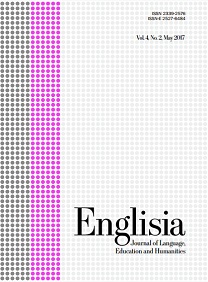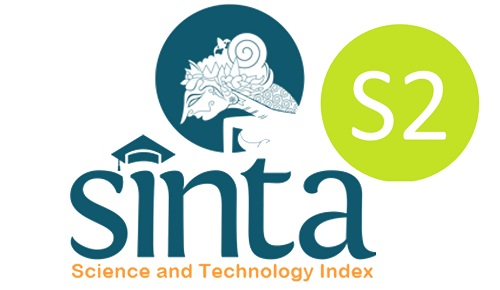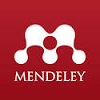MANAGING DISRUPTIVE BEHAVIOR OF STUDENTS IN LANGUAGE CLASSROOM
DOI:
https://doi.org/10.22373/ej.v4i2.1661Keywords:
disruptive behavior, managing language classroomAbstract
This article describes students’ disruptive behaviors in language classroom that may greatly affect language teaching and learning process, especially in ESL or EFL classes. Teachers should know what disruptive behavior is to enable them to deal with problems occurred in their classroom or to take preventive actions to keep their students well-behaved during the class. This can reduce the occurrence of misbehavior of students in their classroom. To prevent disruption in the classroom, teachers should establish behavioral expectations in the first day of the semester and the expectations can be based on students attendance, arrivals and departures, class participation, full English speaking, and other appropriate conducts in the syllabus and discuss them at the outset of the term. The agreement is then assigned as a learning contract or a code of conducts with which bounds the whole class. Consequently, whenever students are misbehaved, teachers and other students will directly know and recognize that the behaviors are out of the code. There are factors reasoning students to behave badly, so teachers as trouble solvers have to find appropriate strategies that are effective in helping students keep the code. Otherwise, the disruptions will escalate quickly and the problems will increase in numbers rapidly and finally, teachers will have to work very hard to avoid teaching failure and “losing face†when they cannot manage the disruption as listed in the expectation.Downloads
References
Albert, L. (2003). Cooperative discipline (3rd ed.). Circle Pine: American Guidance Service.
Barry, K & King, L. (1998). Beginning teaching and beyond (3rd ed.). Katoomba: Sosial Science Press.
Bellon, J. J., Bellon, E. C., & Blank, M. A. (1996) Teaching from a research knowledge base. Englewood Cliffs: Prentice Hall.
Brown, H. D. (2001). Teaching by principles: an interactive approach to language pedagogy. San Francisco: Longman.
Charles, C. M. (2004). Building classroom discipline (7th ed.). New York: Longman.
College of San Mateo. (2013). Faculty handbook 2012-2013. San Mateo: College of San Mateo
Cruickshank, D. R., Jenkins, D. B., & Metcalf, K. K. (2009). The act of teaching. New York: McGraw-Hill.
Daniels, A. (2013). Dealing with disruptive student behavior. Retrieved from http://www.livestrong.com/article/147291-what-is-disruptive-behavior-in-the-classroom/
“Disruptive and Behavior†(2012). Retrieved from http://www.merriamwebster.com/dictionary/disruption
Ghazi, S. R., Shahzada, G., Tariq, M., & Khan, A. Q. (2013). Types and causes of students’ disruptive behavior in classroom at secondary level in Khyber Pakhtunkhwa, Pakistan. American Journal of Educational Research, 1(9), 350-354.
Hansen, J. M & Childs, J. (1998). Creating a school where people like to be, Educational Leadership, 63(4), 172-174.
Harmer, J. (1991). The practice of English language teaching. London: Longman.
Hedge, T. (2008). Teaching and learning in language classroom. Oxford: Oxford University Press.
Hendrick, J. (2001). The whole child (7th ed.). New Jersey: Prentice Hall.
Khajloo, A. I. (2013). Problems in teaching and learning English for students, International Journal of Engineering Research and Development, 7, 56-58.
Marsh, C. (2008). Becoming a teacher: knowledge, skills, and issues. Australia: Pearson.
Marzano, R. J., Marzano, J. S., & Pickering, D. J. (2003) Classroom management that works: research-based strategies for every teacher. Alexandria: Association for Supervision & Curriculum Development.
Richards, J. C. & Farrel, T. S. C. (2011). Practice teaching: a reflective approach. New York: Cambridge Univ Press.
Richards, J. C., & Renandya, W. A. (2002). Methodology in language teaching: an anthology of current practice. Cambridge: Cambridge University Press.
The University of Houston Student Handbook. (2017). Retrieved from Civilityflier.pdf
The University of Washington. (2017). Disruptive behavior in the classroom. Retrieved from http://dsl.uw.edu/faculty/disruptive-behavior-in-the-classroom/
Tomorrow's Teaching and Learning. (2017). Dealing with disruptive student behavior. Retrieved from https://tomprof.stanford.edu/posting/1353
UH Hilo Student Conduct Code. (2017). Disruptive student behavior in the classroom. Retrieved from https://hilo.hawaii.edu/studentaffairs/conduct/disruption.php
Ur, P. (1996). A course in language teaching. Cambridge: Cambridge University Press.
Downloads
Published
Issue
Section
License
Proposed Policy for Journals That Offer Open Access
Authors who publish with Englisia journal agree to the following terms:
- Authors retain copyright and grant the journal right of first publication with the work simultaneously licensed under a Creative Commons Attribution License that allows others to share the work with an acknowledgement of the work's authorship and initial publication in this journal.
- Authors are able to enter into separate, additional contractual arrangements for the non-exclusive distribution of the journal's published version of the work (e.g., post it to an institutional repository or publish it in a book), with an acknowledgement of its initial publication in this journal.
- Authors are permitted and encouraged to post their work online (e.g., in institutional repositories or on their website) prior to and during the submission process, as it can lead to productive exchanges, as well as earlier and greater citation of published work (See The Effect of Open Access).









